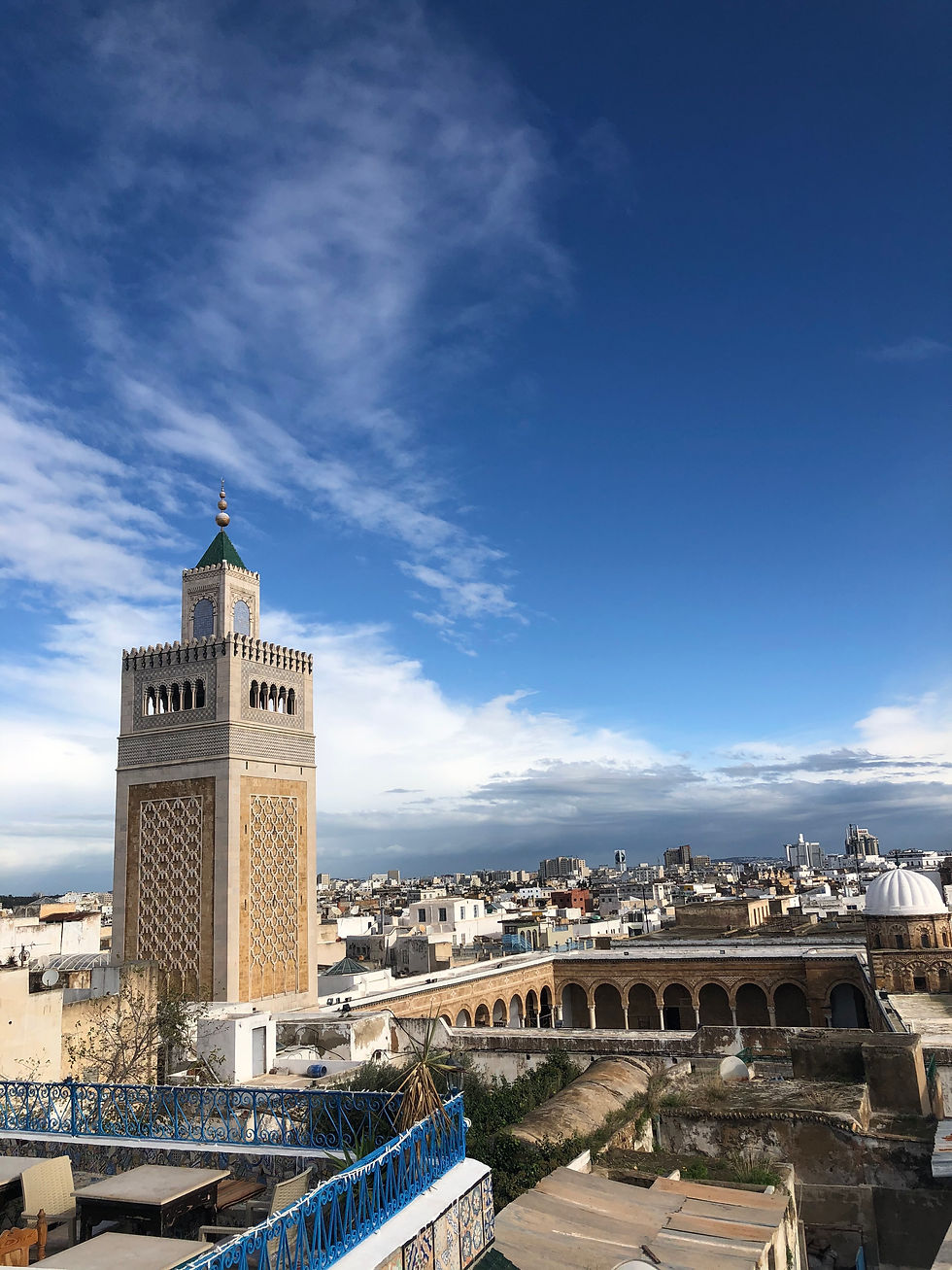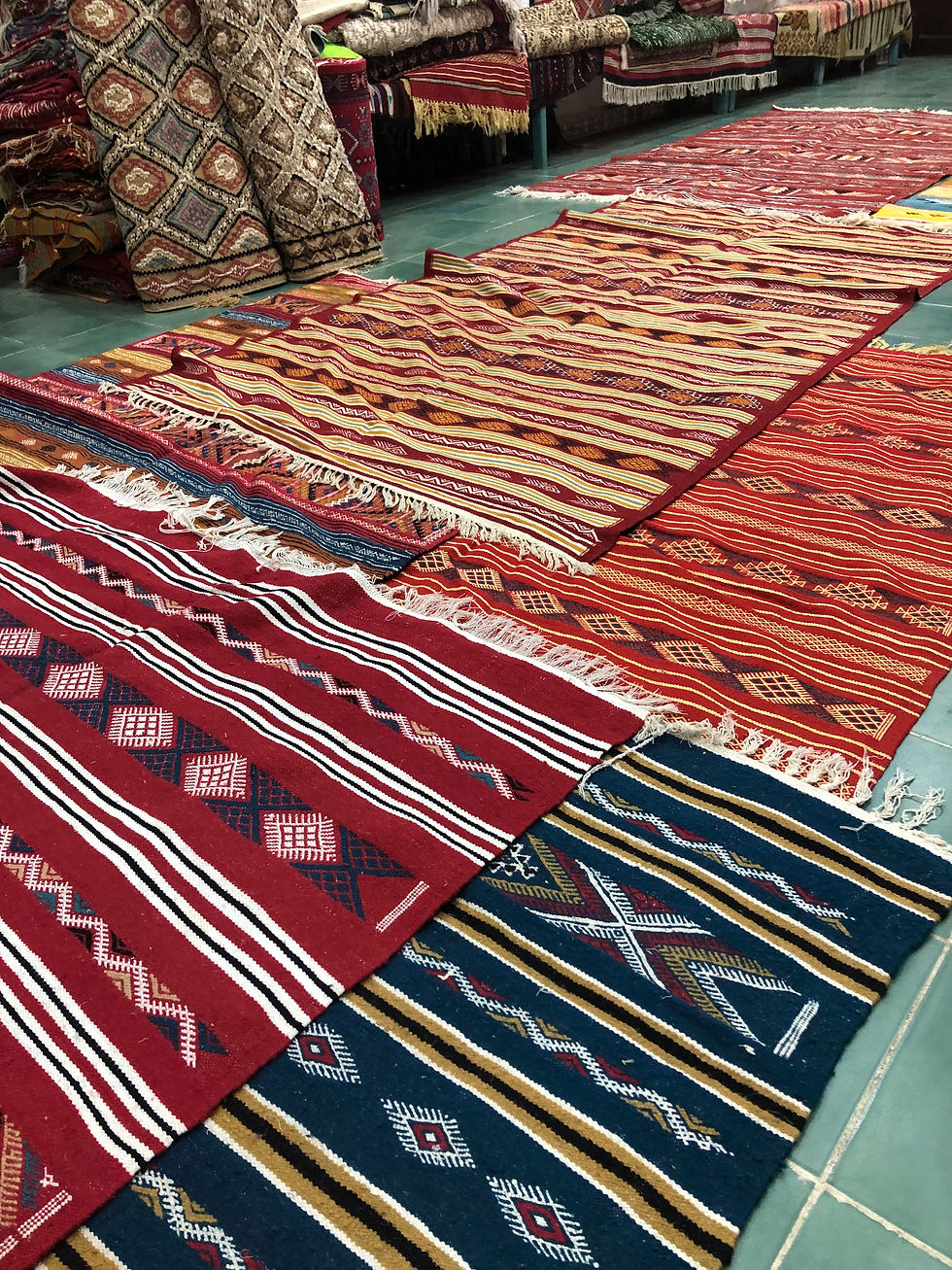A Pedacito Of What To Find In A Tunisian Medina
- Ian Berger
- Jan 24, 2022
- 3 min read
Updated: Jun 2, 2022
A skinny path lay before me through the overcrowded and underregulated traffic of the maze-like, foot-trafficked streets of the Tunis Medina.

Look in any direction for more than a second, and I’d get swaddled in numerous invitations in French, English, and Arabic, informing me that I need to see this specific leather bag, or that these pottery pieces would be exactly what I was looking for.
If I stayed long enough at a shop, trying my hand at beginner Arabic and barrier transcending hand motions, perhaps I’d get invited to have coffee with a shopkeeper, or instead would struggle to find my way out of the shop without buying anything.
On an average day in the Medina, one could find donkeys pulling carts, people headed to pray in the famous Al-Zaytuna Mosque, cats gliding across the streets and shop floors, drifting scents pulling the average visitor to bakeries, cafes, and restaurants with traditional Tunisian food, the tinkering of custom plate ware being hammered, and the smell of old rugs and leather.

The winding streets, the plethora of rich colors, and the call of the merchants were all overwhelming at first. After getting acclimated, the Medina became one of the places I most enjoyed visiting most.
What's a Medina? The word is prominently found in the Qur’an, referring to the period of Islam in which the Prophet Mohammed lived in the city named Medina, in Saudi Arabia. The Arabic term literally means “city,” and is often referring to the “Old Arab” quarters of towns in North Africa and sometimes the Middle East.
While varying from country to country Medinas often have similar characteristics, merchants, and products. I draw upon my experiences in Medinas from Bizerte, Tozeur, and Tunis, Tunisia, and second-hand knowledge of other Medinas in Palestine and Morocco.

Pottery
Some of the most beautiful pottery can be found in these tiny shops tucked away in the maze of a Medina. Many countries vary in the specific style: I’ve found that Tunisia is known for the famous Sidi Bou Said blue and white colors, Palestine for its vibrant colors and fruits, and Morocco for its carved-looking designs.
Olive Wood
I once heard it said that the most organized thing in Tunisia is the olive fields. Whether the previous statement is completely true or not, there are a plethora of olive tree fields throughout the countryside. Olive trees are common in most of the Middle East and North Africa, in fact, it is common to find an olive tree on residential property in cities, too.
With many olive trees to go around, there is a good reason for the many olive wood items found in markets like the Medina. Here’s an example of items that can be made from olive wood: chess boards, utensils, bowls, wine stoppers, cutting boards, storage containers, and other kitchen items.

Qahwa
Coffee and Cafes are called “Qahwa'' in Arabic. Qahwas heavily populate Medinas, as many people love to drink the infamous Arab Coffee and Tea. While delicious, be aware that Arab Coffee and Tea is known for being loaded with sugar. Arab Coffee is made in a special metal coffee pot with cardamom and sugar. You must try this Arab treat!
Cultural Items
Walking down a street in a Medina often can feel like looking through a kaleidoscope of fabric, ceramics, food, people, and culture. Each region and country have different cultural items that vary.
In North Africa, the Amazigh, or Berber people, have stunning rugs with a style unique to the South. Djellabas, robes popular in North Africa, which inspired the Jedi Robes in the Star Wars franchise, are used as wraps during the winter. There are also other traditional clothing items like dresses, fez hats, shoes, sandals, and shirts.
Go Get Lost In A Medina
If you ever find yourself in North Africa or the Middle East, please go spend time in the local Medina. Before you visit, be sure to research what cultural items and dishes are specific to the region you are visiting.

Medina’s are one of the more accessible places to get exposure to rich culture and tourism. Once you visit and return home, you’ll be begging for more Qahwa Arabia and Pottery. Enjoy!
Join our community to network with other travelers around the world and to gain access to exclusive content and events. Submit your travel stories for a chance to get published! If you enjoy stories like this and want to support our community, join our Patreon by clicking the link below.







Thanks for sharing this story and the beautiful photos! I can't wait to visit Tunisia.